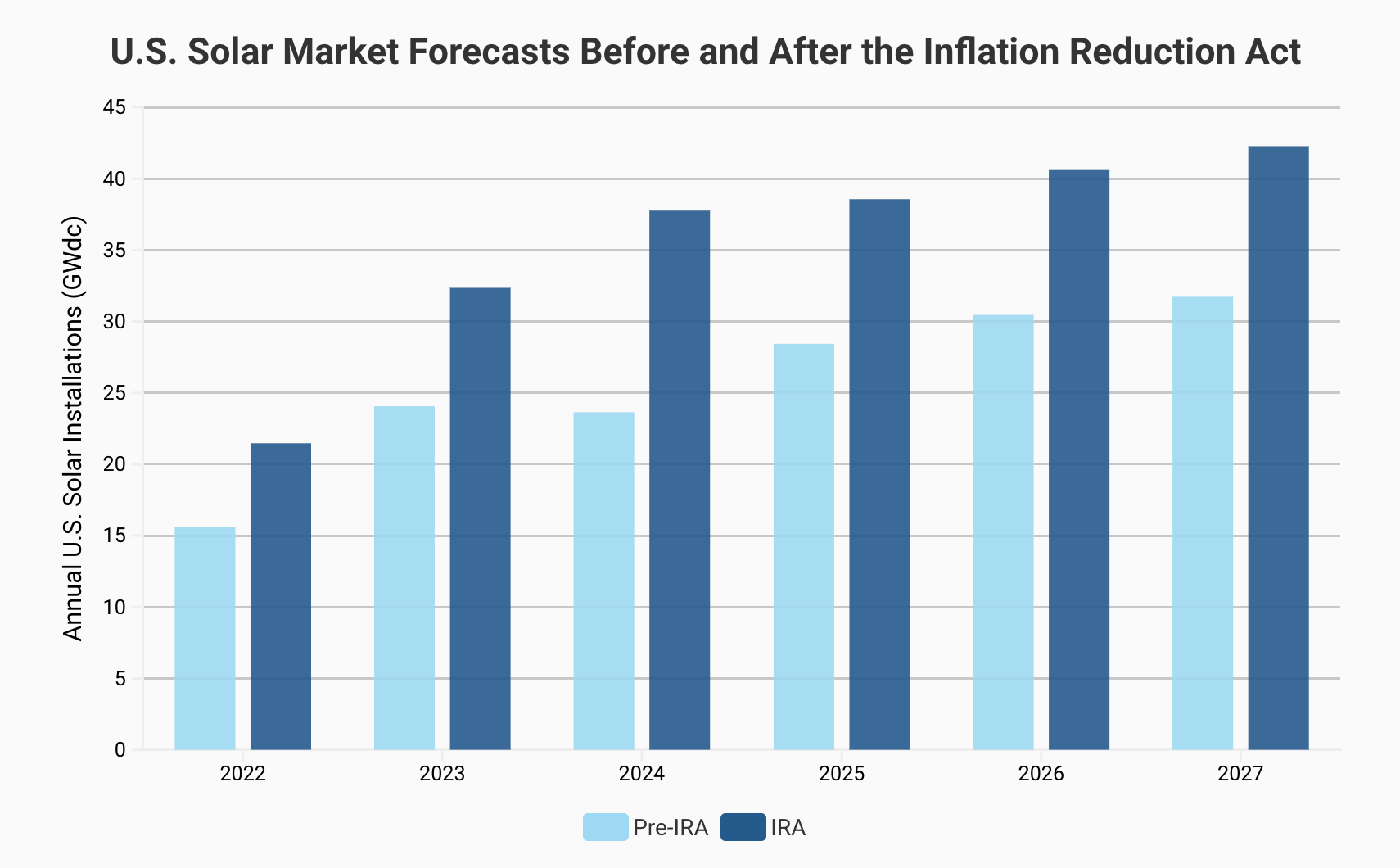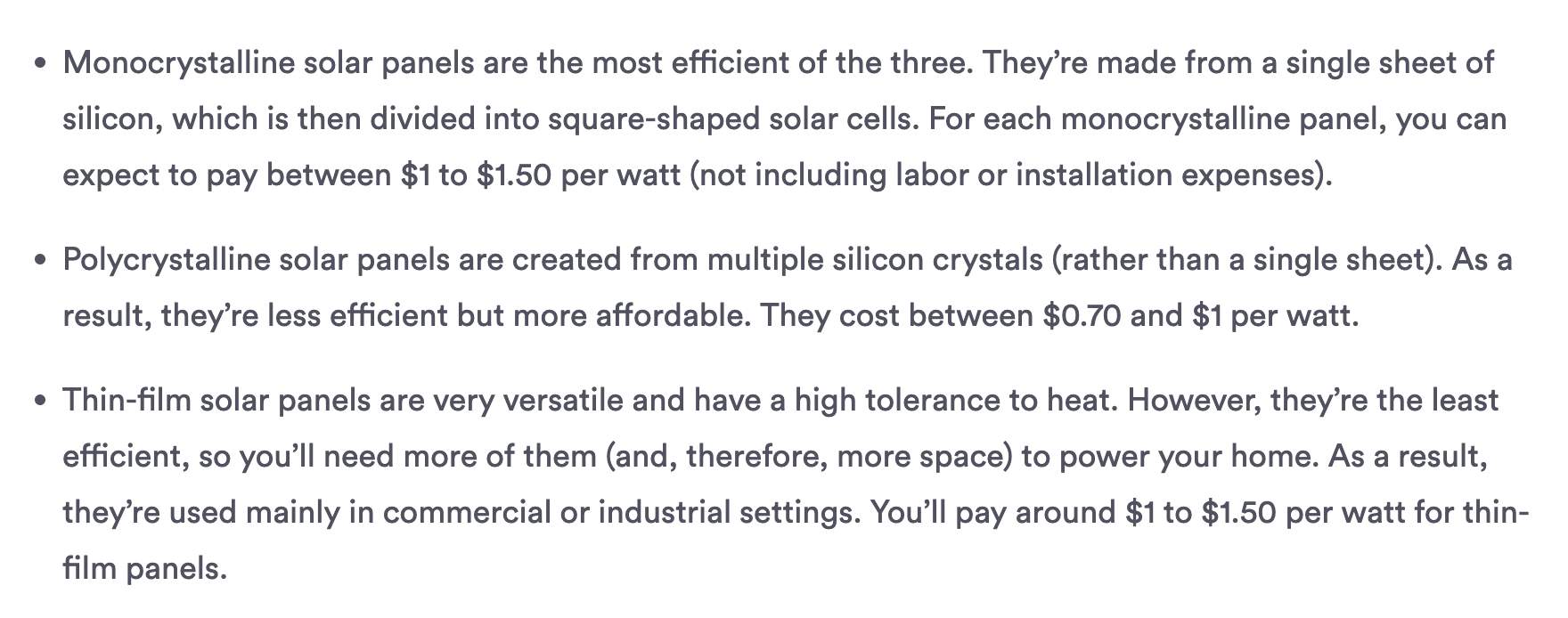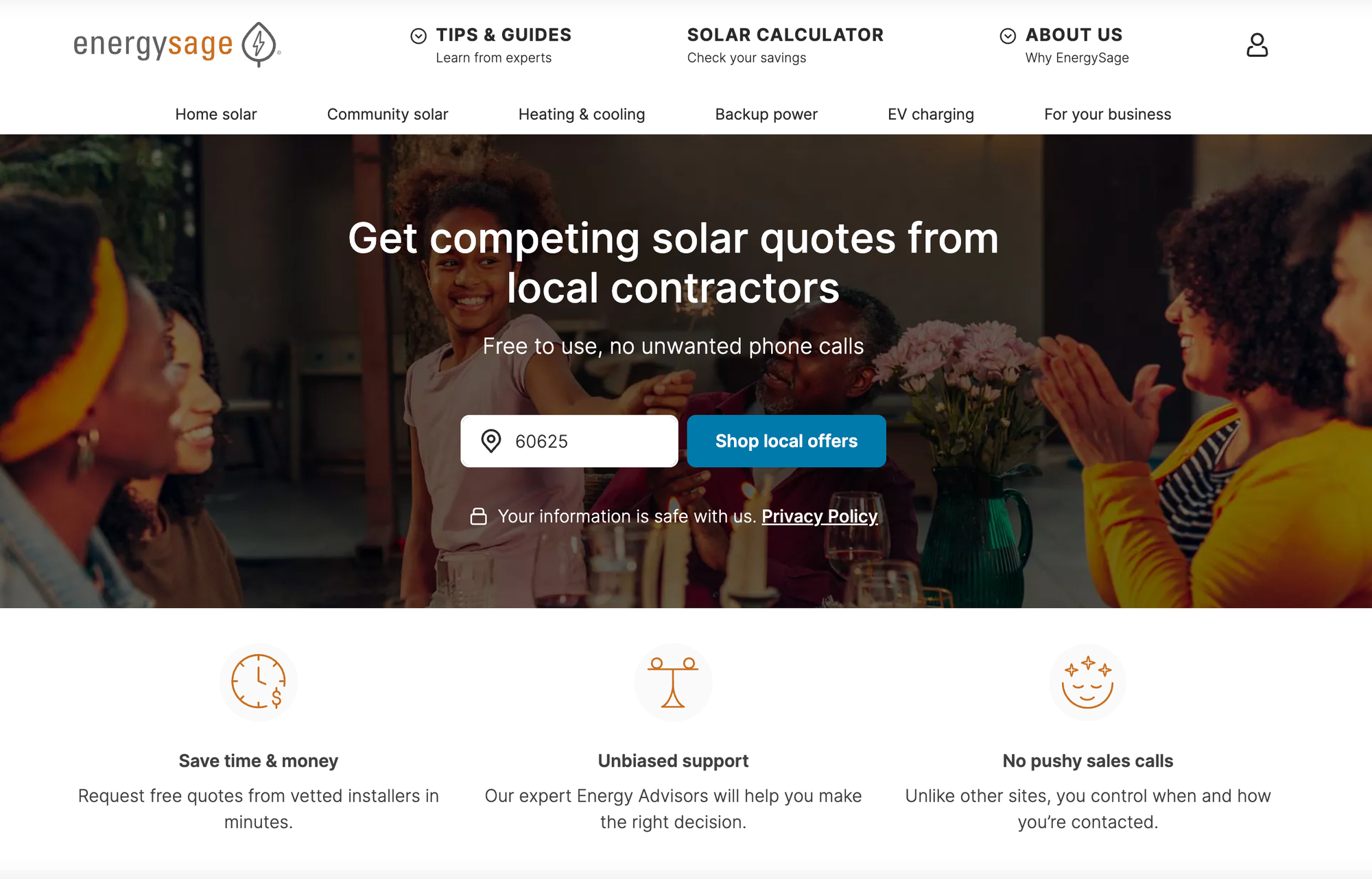Installing Solar
Mindset of Change
You Want the Sun by Niki & The Dove
With the Inflation Reduction Act in 2022, the Federal government introduced Federal tax credits for installing solar panels on both residential and commercial buildings. Many states followed suit and introduced state tax credits or rebates as well. In response, solar panel providers and marketing companies have proliferated, eager to help consumers take advantage of these incentives (seia.org).

Concurrently, improvements in solar technology (largely coming out of China) have increased the efficiency of solar panels and reduced costs (iea.org). All in all, its never been a better time to go solar. Not only is it better for the planet, but the panels generally pay for themselves in 5-10 years (less if you do not need financing) by reducing your utility bill. Some states even pay you for overproducing and selling back to the grid through a process called net metering.
Let's review some concepts:
- Net metering - usually this means you get credits for energy you contribute to the grid, which pays off energy you draw from the grid. This is not generally a money making kind of operation, as most states only allow you to withdraw energy 'savings' as credits. It does mean you get the stability of the grid while also the energy independence and carbon savings of solar at low amortized cost.
- Photovoltaic (PV) technology - the technology used to convert sunlight into usable energy. Often used in panels aka "solar panels", but also has been adapted into coatings, stickers etc. Specifically PV tech converts sunlight into direct current (DC) energy. There are three types of panels (see below), and for residential buildings, generally monocrystalline are the way to go, but if you want to deep dive, here you go.

- Inverters - inverters take the direct current (DC) energy created by your panels and turn it into alternating current (AC) energy, which is what the electrical grid uses. (Funny enough, most electronics use DC energy, so when you plug something in, those plugs convert AC back to DC) (energy.gov).
- One important thing to note about inverters is that they do not necessarily have a 1:1 relationship with your panels. In some solar arrays, a bunch of panels will have a single inverter. This is usually lower cost, but it also means that if one of the panels in the bunch goes down, it can take down a significant portion of the array. For this reason, it's better for long term performance of your array to have 1:1 inverter to panel.
- Batteries - Although net metering is probably the most common, because most people do not want to risk going without power, if you want total energy independence, you can also install batteries. This means that the energy from your solar array will charge the battery. The batteries can be additive to the grid, meaning the battery gets charged first, or if you want to be totally off-grid, batteries are your primary storage capacity.
- Some EVs can also act as batteries with or without a special inverter. If you already have an EV, this could be cheaper than actually buying a battery, as their price can fluctuate pretty widely.
- Installers - the company that actually installs your solar panels and hooks them up to the grid and/or a battery system. These are usually electricians but specialized solar installation outfits are popping up all over that provide an electricians but also general laborers or roofers to deal with the bulk of installation.
- "Solar companies" - these come in a lot of different permutations. In states with high solar incentives, there are often solar specialized marketing companies that operate as a sales front for installers (lots of competent tradesmen are not super great at marketing and selling stuff). If you start googling, you're bound to start getting ads for these companies. There was even a fellow recently at my local Lowe's!
- Although they can be a bit pushy, talking to these people is the easiest and fastest way to get solar installed. Installers want to stay busy installing, and it often takes a lot longer to get through to them (if they answer at all), whereas the marketers are eager to talk to you and give you all the information. There is not generally a high cost premium in a competitive area. In addition, some of them will help you figure out how to file for the tax incentives or rebates.
- Permitting - this varies by state, but is something else the solar companies tend to be good at. They work with the installer (or sometimes on their own) to submit the paperwork for your permits on the frontend, and schedule inspection on the backend. (Inspection is usually necessary before you actually get any money back.)
- Incentives - this varies by state, although the federal tax incentive of 30% is applicable to everyone who installs between 2017 and 2034 with a minimum wattage (energy.gov). For state incentives, this is good place to start: Unbound Solar.
- Note: Although these incentives are significant, there is significant lead time to getting money back. Tax credits are applicable next time you file your taxes, but state rebates can take 6-12 months.
Getting Solar Installed
So how do I actually start the process?
- Read about the federal incentives, because they're big: (energy.gov).
- Read about your state incentives. Marketers will want to tell you about them, but its better that you understand them for yourself: Unbound Solar.
- Log into your utility provider and pull together a couple things for later:
- Find your average energy usage over the last 6 months or a year
- Download your latest utility bill as a pdf
- Consider whether you need financing or could pay out of pocket. A ballpark number is something like $15-25k. Obviously this will change depending on your area, panel costs, labor costs, and incentives, but if you start going over $25k its probably good to be a little skeptical. Of course, interest rates also vary, but there are a lot of options for financing, including personal loans, home equity loans, and some mortgage types. Here is a good place to start looking at this: Bank Rate.
- Consider whether you want batteries, whether you want to integrate with an EV, and generally what balance of stability and independence you want.
- Create a profile on EnergySage and get quotes from providers in your area. They also can help with financing, but you should have a good idea of your options on this front before you get quotes.
- Once you get quotes, compare them and consider the costs and time to pay off the installation. Then reach out to your top 2-3 solar companies / installers to get a sense of the timelines and how much they can help you with rebates etc.
- Choose a solar company to get the ball rolling. Usually you need to pay a portion upfront to start permitting, buy panels and book the installers. That means your financing needs to qualify, or you need to fork over the cash, within 2 weeks generally.
- Don't be surprised if the solar company turns you over to an installer point person after the initial contract is signed.
- Your solar provider can advise you on timelines, but often installation can be completed within 1-3 months, depending on state permitting timelines. Your installers will probably need access to your electric box and thus for you to be home once or twice to give access.
- Once your panels are installed, you will need to get an inspection. This can take a bit more time. Once you have an inspection, you can file for rebates or incentives and your panels get turned on! If all goes well, you experience no difference, except now you're on solar and your utility bill should basically go to zero.
- Last but not least, brag about it. Encourage others. Installing solar is a little more work upfront, but it is cheaper in the long run and much better for the planet.
- In fact, some green banks have special solar loan programs. Green financing for climate action!
Go forth and solar! Energy independence! Distributed grid! Be the wave of the future!
